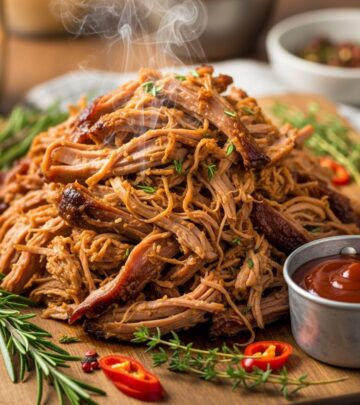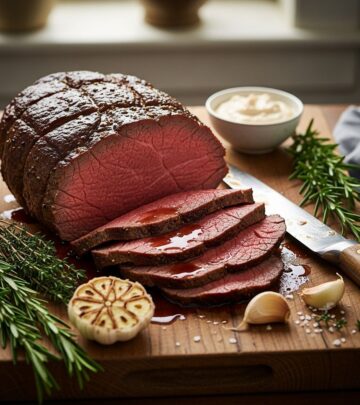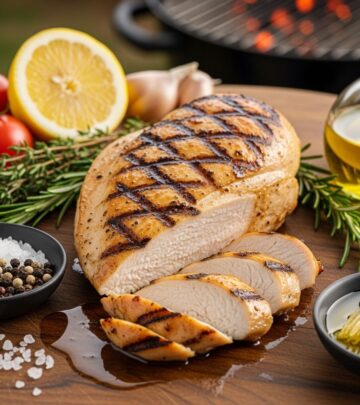Orange Atole: Exploring Mexico’s Warm Citrus Corn Drink
Embrace the zesty warmth and smooth texture that makes this Mexican staple unforgettable.

Orange Atole: Mexico’s Velvety Corn and Citrus Comfort Drink
Orange atole is a classic variation of the beloved Mexican atole—a thick, warming beverage made by simmering corn masa flour or starch with water, milk, sugar, and, in this case, the bright flavors of fresh orange juice. Served piping hot, it is a staple of comfort during cool mornings and festive gatherings across Mexican households. This article explores the history, cultural significance, culinary science, recipe techniques, and irresistible appeal of orange atole, inviting you to understand and recreate this distinctive drink at home.
Understanding Atole: A Staple of Mexican Beverage Culture
The word atole comes from the Nahuatl word “atolli,” meaning watered-down corn. Atole is a pre-Hispanic beverage, one of Mexico’s oldest culinary traditions, created by indigenous cultures well before European contact. Its foundation is corn (maize)—a sacred staple in Mexican cuisine—thickened with masa (corn dough or flour) or more modern substitutes like cornstarch. From the countryside to bustling cities, countless adaptations exist using different local flavors and additions for seasonal warmth and nourishment.
- Origins: Developed by Aztec and other indigenous peoples, atole was traditionally prepared with nixtamalized corn, water, and aromatic spices.
- Evolution: As it spread and adapted, atole took on hundreds of flavors—chocolate (champurrado), fruits, nuts, and, in citrus-rich regions, orange juice.
- Texture: Atole’s distinct velvety texture comes from suspended starch granules, yielding a drink that’s thicker than most hot beverages yet smooth and comforting.
Regional Diversity and Modern Variations
While masa-based atole remains a rural favorite, especially in Mexico’s agricultural states like Veracruz, city dwellers frequently enjoy lighter, milk-thickened versions using cornstarch. Each version reflects local ingredients and preferences, making atole one of the most adaptable and beloved traditional drinks.
The Unique Appeal of Orange Atole
Orange atole (atole de naranja) is rooted in the citrus-growing regions of Mexico, notably Veracruz, where oranges are plentiful. The bright, tart sweetness of orange juice marries beautifully with the earthen notes of corn, creating a drink that’s both invigorating and soothing. It’s a winter tradition, a festival specialty, and an everyday comfort in Mexican households, especially on cool mornings or as a nourishing treat during holidays.
- Flavor profile: Creamy corn, sweetened with sugar, balances the acidity and aroma of fresh oranges.
- Warmth and nutrition: With its robust carbohydrates and vitamin C boost, orange atole provides both energy and immune support.
The Science: How Starch and Citrus Work in Orange Atole
At the heart of atole’s smooth texture is the science of starch gelatinization. As the drink heats, starch from masa harina (finely ground nixtamalized corn flour) or cornstarch swells and absorbs liquid, thickening the atole to a custard-like viscosity. The challenge with orange atole is that orange juice is acidic, and acid can weaken starch-thickened systems, potentially thinning or curdling the drink if not handled carefully.
- Starch selection: Traditional recipes use masa harina, but urban kitchens may swap in cornstarch for a silkier mouthfeel.
- Cooking method: Adding starch to cold water first prevents lumps. Gradually stirring the masa slurry into hot orange juice allows for even thickening.
- Acidity management: Cooking the masa and water before introducing orange juice can help stabilize the starch network.
- Sweetening: Sugar binds excess moisture and enhances the drink’s velvety consistency.
Essential Ingredients for Orange Atole
Authentic orange atole keeps its ingredient list short and straightforward, letting the natural flavors shine. Here’s what you’ll need:
- Corn masa harina (or occasionally cornstarch)—provides body and corn flavor.
- Fresh orange juice—for brightness and acidity; seeds strained out.
- Water—the base liquid, sometimes partially replaced with milk in modern variations.
- Sugar—balances tartness and deepens the drink’s appeal.
- (Optional) Spices such as cinnamon or vanilla—these can add aromatic depth, especially in holiday preparations.
Traditional vs. Contemporary Ingredient Table
| Ingredient | Traditional Recipe | Modern Variation |
|---|---|---|
| Corn base | Masa harina (corn dough flour) | Cornstarch or even blended corn kernels |
| Liquid | Water | Water and/or Milk |
| Sugar | Piloncillo (unrefined cane sugar) or white sugar | White, brown, or alternative sweeteners |
| Flavoring | Fresh-squeezed orange juice | Bottled juice, zest, or additional citrus types |
| Spices | Occasional cinnamon stick | Options: vanilla extract, cinnamon, cardamom |
How to Make Orange Atole: Step-by-Step Guide
Ingredients:
- 6 tablespoons masa harina (or cornstarch for a smoother finish)
- 2 cups water (for dissolving and initial cooking)
- 2 cups freshly-squeezed orange juice, seeds removed
- 4 tablespoons sugar (white or light brown)
- Optional: cinnamon stick, vanilla bean or extract
Instructions:
Prepare the masa mixture: In a small bowl, thoroughly combine masa harina with 1 cup of water, stirring until no lumps remain. This forms a smooth suspension and prevents future clumping.
Simmer the orange and sugar: In a small saucepan, combine the remaining water, orange juice, and sugar. Place over medium-high heat and bring just to a simmer, stirring to dissolve the sugar. If using a cinnamon stick, add it now.
Incorporate the masa: Slowly whisk the masa slurry into the pan. Stir continuously to prevent lumps. Let the mixture come back to a simmer, then reduce to low heat and cook, stirring often, until thickened—about 4-5 minutes. Continue simmering for another 5 minutes for full starch gelatinization.
Finish and serve: Remove from heat. If desired, add a splash of vanilla or extra orange zest. Carefully ladle into mugs; the drink retains its heat for a long time due to its thickened consistency. Garnish with a cinnamon stick or a twist of orange peel.
Enjoy: Orange atole is best served immediately, but can be reheated gently if needed. It pairs beautifully with breakfast pastries, tamales, or even as a dessert beverage.
Expert Tips for Perfect Orange Atole
- Prevent lumps: Always dissolve masa harina in cold water before mixing into hot liquids.
- Avoid scorching: Maintain gentle simmering and stir frequently, as the thickened mixture can stick to the bottom.
- Control sweetness: Adjust sugar to taste, accounting for natural orange sweetness.
- Customize: Try substituting part of the orange juice with other citrus (like mandarin or tangerine) or infusing the drink with warming spices.
- Serving suggestion: Pour into thick mugs to best retain heat, and serve with Mexican sweet breads.
Nutritional Benefits and Comfort Factor
Orange atole is more than just a drink—it’s a source of sustenance, comfort, and cultural memory for many. Thanks to its corn base and fresh orange juice, it is also nutritive:
- Energy: Packed with complex carbohydrates from masa harina for lasting warmth and satiety.
- Vitamin C: A healthy dose of immunity-boosting vitamin C from fresh oranges.
- No dairy required: The traditional recipe is dairy-free and vegan-friendly.
- Gluten-free: Authentic orange atole uses gluten-free corn masa harina.
Cultural Context: When and How Orange Atole is Served
In Mexico, atole is woven into the rhythm of daily life and major celebrations alike. Orange atole, with its seasonally bright flavor, is especially beloved:
- Cold mornings: As a breakfast beverage to warm the body before a long day.
- Festivals: Offered during Dia de los Muertos, Christmas, or local citrus harvest festivals.
- With tamales: The classic pairing of hearty tamales and atole creates a filling and balanced meal.
- Street food: Vendors may offer orange atole in portable cups, ladling it straight from steaming cauldrons for hungry passersby.
Frequently Asked Questions (FAQs) About Orange Atole
Why is my orange atole too thin or too thick?
Atole thickness depends on the ratio of liquid to starch and how long it’s cooked. For a thicker drink, use more masa or simmer longer. For a thinner consistency, add a splash of water or orange juice near the end.
Can I make orange atole ahead of time?
Yes, you can refrigerate and gently reheat orange atole, but it may thicken further. Stir in a little water or milk to loosen the consistency before serving.
Do I have to use fresh orange juice?
Fresh orange juice delivers the best flavor and aroma. In a pinch, you can use bottled juice, but check that it’s not overly sweetened or from concentrate.
What’s the difference between atole and champurrado?
Both are masa-thickened drinks. Champurrado is a chocolate-flavored atole, while orange atole is flavored with citrus. The base preparation is similar.
Is orange atole gluten-free and dairy-free?
Yes, if made with traditional masa harina (from nixtamalized corn) and water, orange atole is naturally gluten-free and dairy-free.
Conclusion: Embracing the Comfort of Orange Atole
From its indigenous Mexican roots to its contemporary incarnations, orange atole embodies the adaptability and vibrancy of Mexican cuisine. By blending old-world ingredients with local citrus, it delivers warmth, nourishment, and a unique taste of cultural heritage in every mug. Whether you savor it at sunrise, as an afternoon treat, or during a winter fiesta, orange atole is a drink that welcomes all to the table—one velvety sip at a time.
References
- https://www.mexicoinmykitchen.com/orange-atole-de-naranja/
- https://kitchenlovestories.com/mexican-atole-sweet-corn-drink/
- https://www.davidlebovitz.com/atole-mexican-drink-recipe/
- https://www.quericavida.com/recipes/orange-atole/5405e9a2-b3c2-4cd7-9ad3-e52f755b86d5
- https://www.eatyourbooks.com/library/recipes/1437229/hot-mexican-corn-drink-with
Read full bio of Sneha Tete












